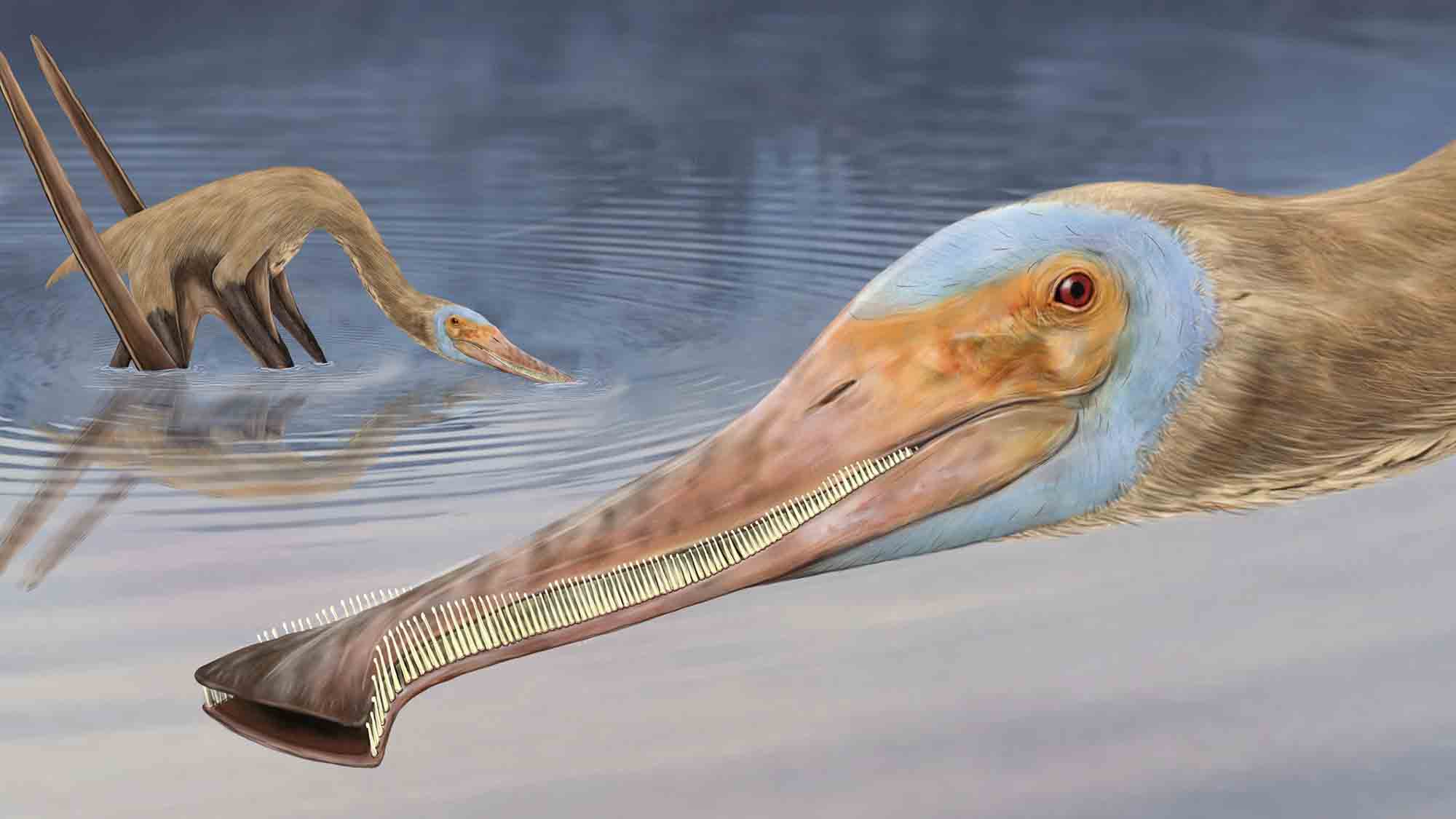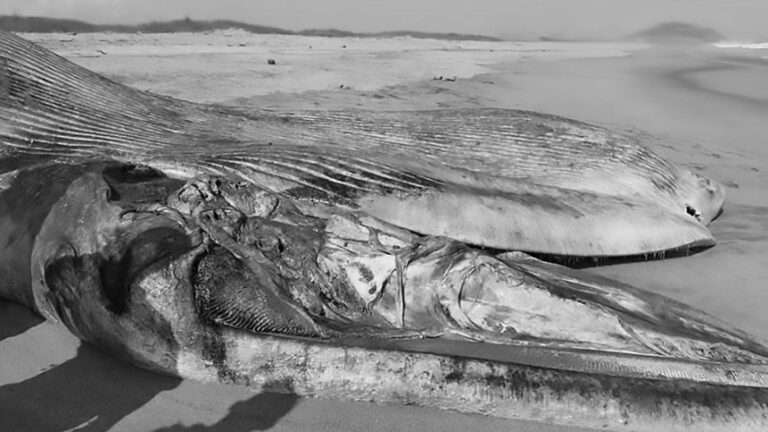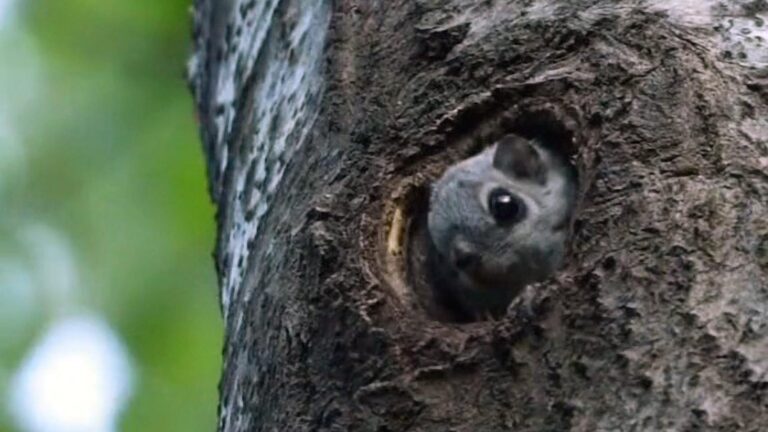A new species of flying dinosaur with 400 tiny hooked teeth has been unearthed by British scientists.
The bizarre-looking pterosaur – which dates back 152 million years to T-Rex‘s Jurassic period – had rows of teeth down its long billl.
Many of the teeth had tiny hooks at the end, which made sure its prey could not escape.
The only part of its bill with no teeth was at the very tip where it sifted for seafood like a modern day spoobill.
The nearly complete skeleton was found in a quarry in Germany, according to a statement from the University of Portsmouth on 23rd January,.
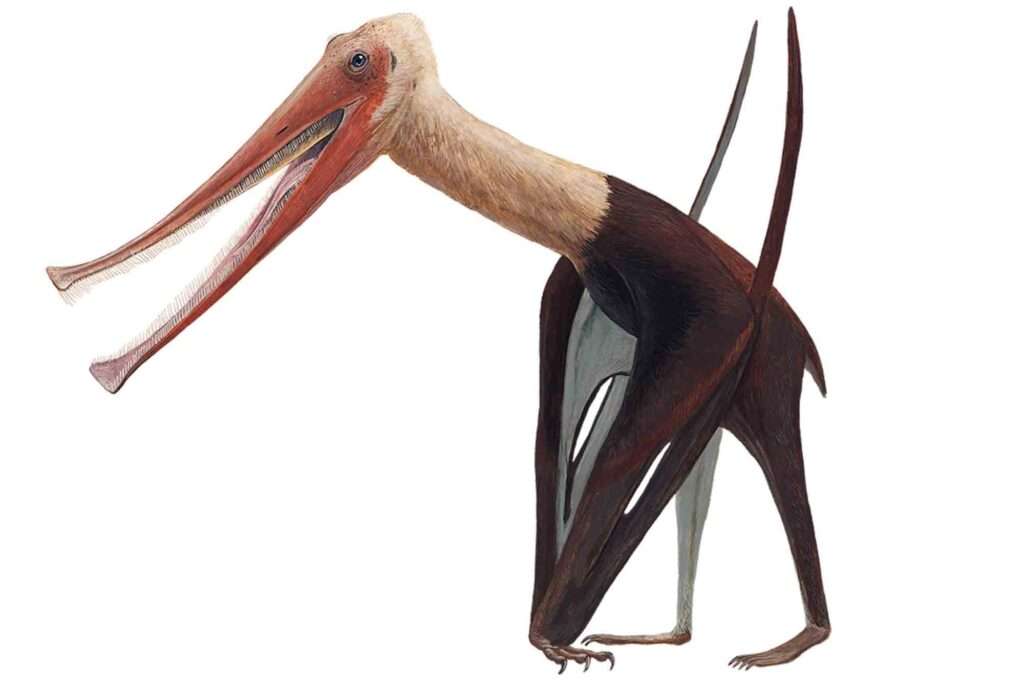
The remains have now been studied by palaeontologists from England, Germany and Mexico.
The research was led by Professor David Martill, from the University of Portsmouth’s School of the Environment, Geography and Geosciences.
He said: “The nearly complete skeleton was found in a very finely layered limestone that preserves fossils beautifully.
“The jaws of this pterosaur are really long and lined with small fine, hooked teeth, with tiny spaces between them like a nit comb.
“The long jaw is curved upwards like an avocet and at the end it flares out like a spoonbill.
“There are no teeth at the end of its mouth, but there are teeth all the way along both jaws right to the back of its smile.”
He added: “And what’s even more remarkable is some of the teeth have a hook on the end, which we’ve never seen before in a pterosaur ever.

“These small hooks would have been used to catch the tiny shrimp the pterosaur likely fed on – making sure they went down its throat and weren’t squeezed between the teeth.”
Amazingly, scientists made the discovery by accident while they were excavating a large block of limestone forcrocodile bones, said the university.
Professor Martill explained: “This was a rather serendipitous find of a well-preserved skeleton with near perfect articulation, which suggests the carcass must have been at a very early stage of decay with all joints, including their ligaments, still viable.
“It must have been buried in sediment almost as soon as it had died.”
The statement added: “The pterosaur belongs to a family of pterosaurs called Ctenochasmatidae, which are known from the limestone in Bavaria, Germany, where this one was also found.
“Since the first pterosaur was described from there in the 18th century, hundreds of remains of these flying reptiles have been discovered, making the quarries of the Franconian Jura in Bavaria one of the richest pterosaur localities in the world.”
Professor Martill said: “This pterosaur had teeth in the upper and lower jaw, which are a mirror image of each other.
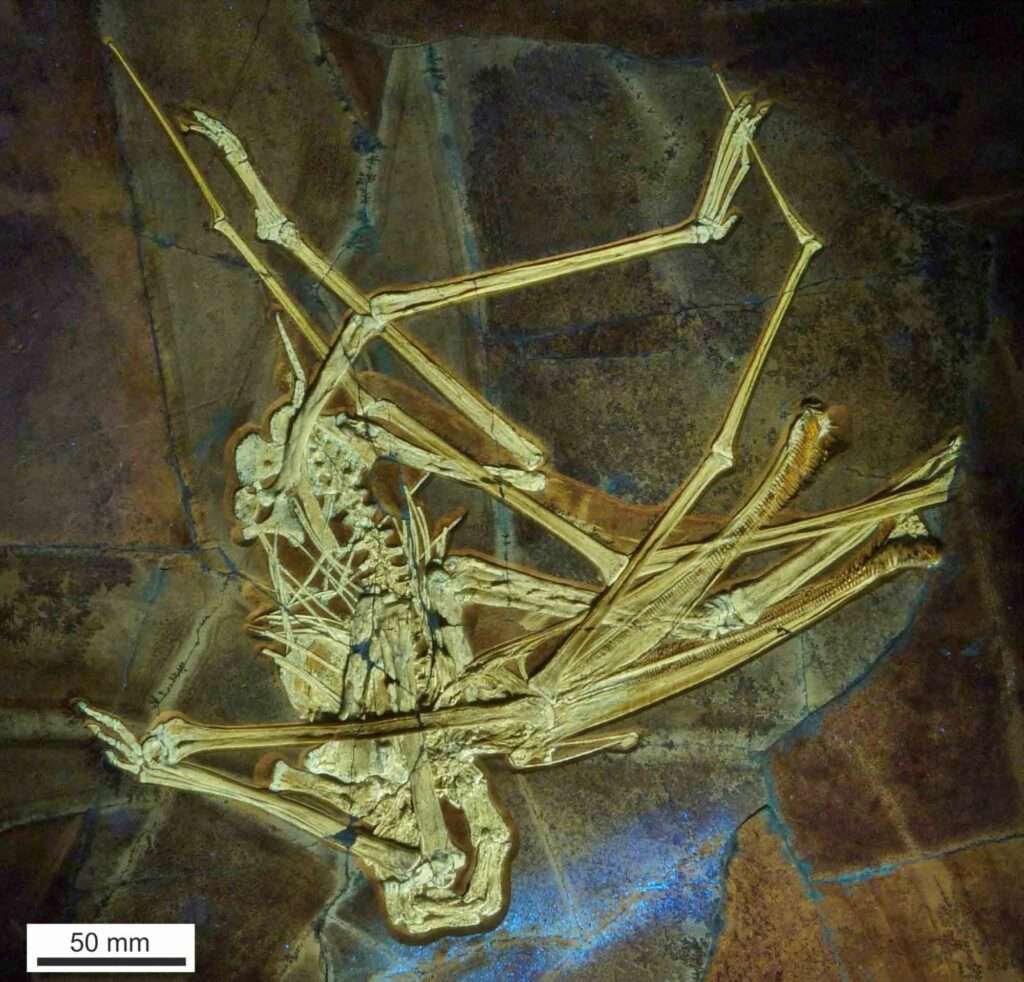
“There is one other pterosaur with more teeth – Pterodaustro from Argentina – but it has stubby teeth in its upper jaw and even longer teeth in its lower jaw, so this new specimen is very different from other ctenochasmatids.”
The statement also said: “The teeth of the new pterosaur suggest an extraordinary feeding mechanism while it waded through water.
“It would use its spoon-shaped beak to funnel the water and then its teeth to squeeze out excess liquid, leaving prey trapped in its mouth.
“The animal likely dabbled as it waded through shallow lagoons, sucking in tiny water shrimps and copepods and then filtering them out through its teeth just like ducks and flamingos.
“It has been named Balaenognathus maeuseri. The generic name roughly translated means whale mouth because of its filtering feeding style.
The specific name is after one of the co-authors Matthias Mäuser who sadly passed away during the writing of the paper.”
Professor Martill, who work of an international team of palaeontologists including Eberhard Frey, Helmut Tischlinger, Hector E. Rivera-Sylva and Steven Vidovic, said: “Matthias was a friendly and warm-hearted colleague of a kind that can be scarcely found. In order to preserve his memory, we named the pterosaur in his honour.”

The team’s findings have been presented in a paper titled ‘A new pterodactyloid pterosaur with a unique filter-feeding apparatus from the Late Jurassic of Germany’ published in the academic journal Palaeontologische Zeitschrift.
The specimen is now on display in the Bamberg Natural History Museum in the city of Bamberg, in Germany.
To find out more about the author, editor or agency that supplied this story – please click below.
Story By: Joseph Golder, Sub-Editor: Joseph Golder, Agency: Newsflash
The Ananova page is created by and dedicated to professional, independent freelance journalists. It is a place for us to showcase our work. When our news is sold to our media partners, we will include the link here.

